CYLINDER PALETTES
Palettes are source material from which clay is taken and used in work in the same manner
that a painter takes oils for use in his paintings.
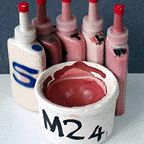 | The plaster hemisphere mold is coated with slip of differing tints, ending with a thick layer of white. The scraps are then embedded within the firmed slip. Shown are eight larger pieces coated with dark slip. Each is spaced radially at every 45 degrees. |  |
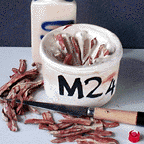 | Scraps and slip are added as the opening gradually closes. Linear pieces are shown embedded radially. White slip is used to fill spaces. Other tints can be used as well. Scraps and slip are then added until the hole closes. | 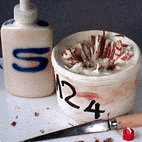 |
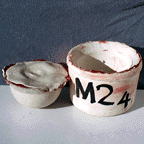 | After the mold has been filled with scraps and slip, the clay is removed once it has sufficiently shrunk from water loss. The hemisphere is shaped into a cylinder. The cavities formed at the top and bottom are then "plugged" with another scrap coated with dark slip. | 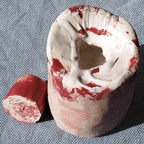 |
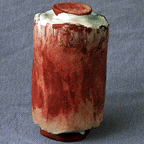 | After top and bottom cavities have been "plugged," the cylinder is smoothed and shaped. It is finally sliced into "buttons" used in the fabrication of work. | 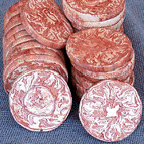 |
| PREPARATION | Slip | Block Palettes | Cylinder Palettes | Tools | Recyclables |
| EIGHT STAGES OF THE OCTAHEDRAL PORCELAIN PROCESS | |||||||
| Conceptualization | Fabrication | Equilibridization | Sphericalization | Sculpting | Lid Fitting | Drying | Firing |